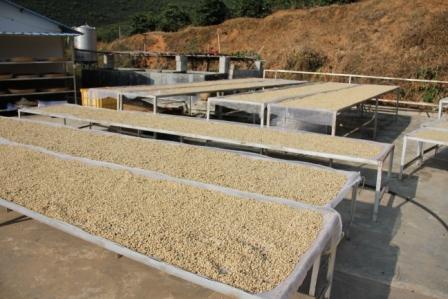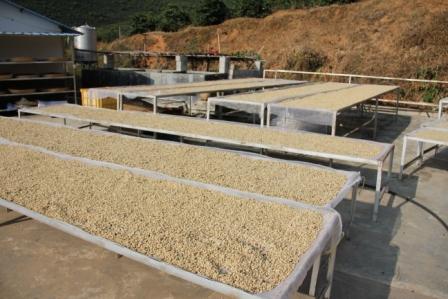Characteristics of Arabica beans Coffee producing countries Coffee producing countries Venezuela
Venezuela
The distinctive manor coffee comes from this oil-rich country.
Oil was once considered Venezuela's main export. Although coffee trees were introduced from Martinique as early as 1730 and Venezuela, coffee production was almost abandoned during the heyday of the oil industry. Coffee plantations have recently begun to recover, with the old Tipica and Bourbon coffee trees and new plantations laying the groundwork for coffee exports. Currently, most Venezuelan coffee is exported to Russia and Colombia, where it is repackaged. Many newly rebuilt small plantations have also begun exporting coffee on their own.
Coffee is not prominent among the many industries in the country. Venezuela's best coffee-producing region is the southwestern state of Tachira. But the name takira has been indiscriminately applied to coffee beans across the country.
Venezuela's best coffees are Montebello from San Cristóbal de Tachira, Miramar from Rubio de Tachira, Granija from Timote de Merida and Ala Granija from Santa Anna de Tachira. Other premium brands include Maracaibos (the name of the coffee export port), Merida, Trujillo, Santa Filomena and Cucuta.
One of the many plantations in Merida, below the Andes, belongs to the Pablo and Luisa Helena Pulido families, an ancient farm that has been allowed to downsize. Since taking over the farm in the early 1980s, the Pulidos have grown new species while harvesting coffee from existing bourbon trees.
The area around Caracas, also known for coffee, has resumed production. Tipika coffee trees are also grown on Jean and Andres Boulton plantations in Turgua.
Venezuelan coffee tastes different from other Latin American coffees in that it is delicious, light and less sour than traditional coffee, which makes it not only blended but also unique.

Important Notice :
前街咖啡 FrontStreet Coffee has moved to new addredd:
FrontStreet Coffee Address: 315,Donghua East Road,GuangZhou
Tel:020 38364473
- Prev

The unique quality of Italian concentrated blending and the flavor of Italian concentrated blending.
Commercial coffee trees planted are mainly divided into three categories: Arabica (Arabica), Robusta (Robusta) and Liberika (Liberica). Among them, Liberika (Liberica) is rarely seen because of its small output. It is generally believed that Arabica (Arabica) coffee beans grown at high altitude have elegant aroma and taste, while those grown at low altitude (Robusta)
- Next

Characteristics of Arabica beans Coffee beans from Suriname
Suriname Suriname (Surinam) is the first country in South America to grow coffee, and Norway was once a major importer of coffee products. However, the country's output is very small today, and it is mentioned here only for historical reasons. The Dutch, who settled in Suriname in 1667, introduced coffee trees from Java in the early 18th century. The first coffee trees were made by the mayor of Asmstedan.
Related
- Guji coffee producing area of Guji, Ethiopia: Humbela, Shakiso, Wulaga
- What is the most expensive variety of Qiloso in BOP multi-variety group?
- How to store the coffee beans bought home?
- Why are Yemeni coffee beans so rare now?
- Ethiopian Sidamo all Red Fruit Sun Sun Santa Vini Coffee beans
- SOE is mostly sour? What does it mean? Is it a single bean? what's the difference between it and Italian blending?
- Is Italian coffee beans suitable for making hand-brewed coffee?
- How to choose coffee beans when making cold coffee? What kind of coffee beans are suitable for making cold coffee?
- Just entered the pit to make coffee, what kind of coffee beans should be chosen?
- Can only Japan buy real Blue Mountain Coffee? What are authentic Jamaican Blue Mountain coffee beans?

